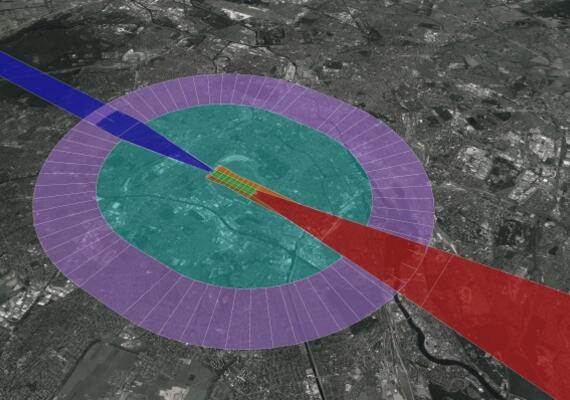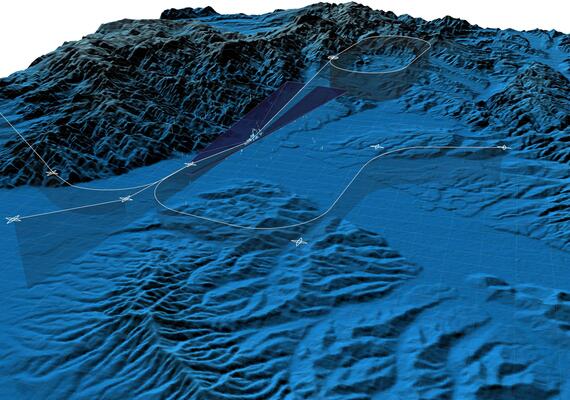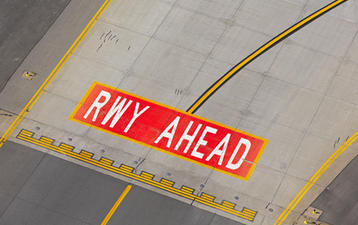Optimization of Runway Lengths and OLS in Mountainous Environment
Airport St. Stephan
airsight has been appointed to demonstrate the potential of relocated landing thresholds and runway ends at St. Stephan Airfield, located in the Swiss Alps. The aerodrome operator is planning to optimize the runway length to allow for longer landing and take-off distances.
The mountainous terrain and, therefore, the challenging obstacle environment significantly determine the location of the landing thresholds. To re-define the runway layout and declared distances (LDA, TORA, TODA), an operational evaluation rather than a compliance-based analysis was conducted.
As part of the study, the proposed runway layout was developed by means of curved approach and take-off climb surfaces. Aircraft are required to follow the valley and must turn at low altitudes just before touchdown. Therefore, tailored obstacle limitation surfaces (OLS) have been derived in such manner that curved approach tracks are safeguarded aiming for a nominal flight track that is manageable for relevant aircraft types at St. Stephan Airfield. Those flight tracks were based on flight manuals, ICAO Doc. 8168 PANS-OPS principles as well as discussions with pilots familiar with the airfield. In this study, the Visual Segment Surface (VSS) as well as Obstacle Clearance Surface (OCS) as per ICAO Doc. 8168 PANS-OPS were considered as an acceptable means of compliance to the approach surface including an adaption of their dimensions, such as base width and divergence, to account for foreseen aircraft operations. The proposed landing threshold locations were based on clearance of the adapted VSS and OCS, but solely applied for this purpose. Additionally, the runway ends as well as declared distances were reviewed with consideration of several aspects.
Referring to the applied methodology, the locations of both landing thresholds and runway ends could be optimized resulting in significantly longer declared distances compared to former values. An increase of approximately 15% respectively 35% of available distances for take-offs and landings could be realized.
airsight has assisted numerous airport operators, airspace users and project developers in managing new or existing objects and constructions while ensuring aviation safety. Our objective and added value is to find operational or technical solutions meeting the client’s needs. If you have a related project that you would like to discuss with us, feel free to contact us via e-mail or visit our Aerodrome Safeguarding page.
Key Facts



